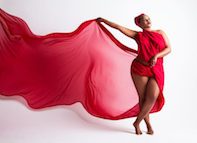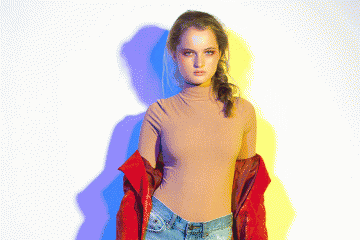The Newbie's Overview to Product Photography
If a image is worth a thousand words, a magnificent product image is worth a thousand site gos to. Although I do not have information to back up that statement (yet), product photography can be very useful to your ecommerce web site strategy.
To reach your target market participants that choose acquiring online, you also require to offer your target market clear, distinctive pictures of your products.
But product photography isn't as easy as directing as well as shooting. Also the most standard products require the right tools, lighting, and space to create gorgeous images that offer buyers right from the purchase page.
6 Product Photography Tips ( and also Examples) for Taking Photo That Market
Right here are the suggestions, examples, and materials you'll need to efficiently photo and also market your items in a manner that makes your site visitors and potential customers want to transform.
1. Do not be afraid to use your smart device's cam.
This is the part where I'm supposed to convince you to buy a high-end, 50-megapixel (MP) cam with a 100-millimeter screw-on lens. Yet I'm not going to do that.
If you currently have a camera Brand Awareness Shoots that fits this description, take advantage of it. But also for several sorts of items, it's completely appropriate to fire product photos on a smart device.
Newer mobile phones boast powerful cam lenses and settings that enable you to enhance your shots for the different kinds of light and also settings you could fire in.
If you require extra convincing, simply check out Apple's Shot On An apple iphone campaign and the photos that have arised from it for many years such as this set:
2. Fire from a tripod for photo consistency.
Before explaining tripods, I'm http://juliusiwni380.trexgame.net/how-to-develop-a-image-perfect-ecommerce-internet-site-with-product-photography obligated to begin with a principal policy: Do not prop your phone versus something durable to intend your lens toward the topic.

It's just too simple for this makeshift setup to glide about during the shoot as well as create inconsistencies in your pictures' look. If you rest your video camera on, claim, a stack of publications, just make certain this setup doesn't transform throughout the shoot.
There's no harm in holding your cam yourself when shooting simply a couple of product pictures for your ecommerce site. However as your business grows, and also you take extra photos of even more items, it can be hard to systematize the product's positioning in each photo when firing portable.
To ensure uniformity across your items, you'll require a tripod. And also thankfully, buying one isn't constantly the big, industrial-sized investment it utilized to be.
Below are two types of tripods to take into consideration.
Conventional vs. Versatile
This is a custom tripod-- there are traditional tripods offered for both cams and also smart devices.
A flexible tripod can be manipulated in a number of ways. You can bend its legs and place it on different surface areas to get the angle you need.
Mobile Hold
There's typically a screw on the top of your tripod which affixes to your cam to hold it in position. The underside of many professional-grade electronic cameras has a screw hole just for this objective, yet smart devices can utilize the following adapter:

The adapter grasps the sides of your mobile phone as well as can screw right into either kind of tripod, permitting you to run the electronic camera manages with the phone display dealing with outside and toward you.
Once you establish which install you'll need, establish it up in front of your product, and also consider putting 3 items of tape on the ground to mark where you 'd like to keep each leg of your tripod over the course of the shoot.
3. Pick all-natural light or fabricated light.
Never underestimate just how particular kinds of light can enhance (or impede) your product photography. Bear in mind, buyers obtain the very best look at an thing face to face, where they can see everything they require to before investing in. The ideal illumination plan assists you expose those vital decision-making product functions when all site visitors need to go on is a photo.
A solitary lights configuration could not work for every product-- a illumination setup that benefits some products could compromise the appearance of others.
There are two kinds of light you can pick as your primary light: natural and also synthetic light.
All-natural Light
Natural light refers to sunshine-- straightforward as that. It's likewise known as "soft light" due to the fact that the sunlight casts a larger, softer range of light than, claim, a light radiating directly on the product. Ecommerce product shots prosper in all-natural light if:
The product is shot outside or meant to be used outside.
The product is made use of by, worn on, or shot with a person ( individuals tend to look better in natural light).You're trying to highlight the product's environments, as opposed to specific attributes of the product.
Right here's an instance of a shot using natural light:
Synthetic Light
Fabricated light consists of candles, fire, as well as much more frequently, light bulbs. It's also described as " difficult light" because it creates a smaller but much more concentrated light surface area. This sort of light satisfies items with physical details that need to be highlighted to excite an online consumer.
As a basic policy, stay with simply one type of light per photo-- natural or artificial. Including all-natural light to an artificially lit photo can soften a product that's implied to festinate, and also adding man-made light to a normally lit photo can develop a product that's suggested to look soft. You do not wish to get in your very own means.
4. Fill or bounce your light to soften darkness.
Whether you use all-natural light or synthetic light, you'll require to decrease the darkness that any type of possible hard light casts on the opposite end of a product.

Fill up Light
Include one more, less-intense light source to supplement your main light. This extra light is called your fill light as well as is utilized as a counterbalance to soften the natural shadow your major light creates behind an things.
To do this, position your fill light opposite your primary light so your product sits between both lights.
Flashbulb Bounce Card
A bounce card, or reflector card, is a little card that "reflects" or " jumps" the main light back onto the surface underneath your product to reduce darkness.
Some bounce cards connect to the flashbulb of a expert camera lens to diffuse the light from the electronic camera's flash. This card sprinkles a softer light onto the subject from above your set-- instead of straight at it-- so you do not have lengthy darkness trail behind the item you're firing.
Standalone Bounce Card
If you're shooting from a smart device, a flashbulb bounce card isn't an alternative, because you don't have a physical flash you can affix it to. Instead, make your own standalone bounce card placed contrary your primary light.
For novices to product photography, this bounce card can effectively replace your fill light, which counters the hard light from the camera flash or lamp that's facing toward the front of your product.
5. Utilize a move or portrait setting to stress the product.
There isn't one best method to position your product, lights, and also bounce cards-- they can transform substantially relying on your history. Yet don't pick a background based on what's simplest to produce. Histories ought to look like how you want your customers to view your product when watching it online.
Consider initially whether you 'd like a white background or a more dynamic, real-world background. There's an simple way to attain every one.
White Background: Move
For white histories, it's not as easy as establishing a table against white drywall. Even mobile phone cameras can grab little imperfections on a white wall surface that you wouldn't discover with the naked eye. To record a ideal white background without corners or imperfections, utilize a move.
A move is a large flexible sheet of paper, whose bottom acts as the surface area beneath your product and after that contours up into a white wall surface behind the product.
On camera, the move's curve is invisible, highlighting crucial product information and enabling the item to own all of a website visitor's interest.
Real-World History: Portrait Setting
Dynamic, real-world histories are very appealing when capturing products that have a particular use or are being designed by a individual-- as you saw aware of the briefcase earlier in this overview.
Yet, it's easy for a real-world background to steal the emphasis of the photo, making it unclear which product in the photo you're really marketing.
Give your product deepness as well as emphasis with picture setting, a picture setting on many professional electronic cameras, and also available on several new mobile phones. This setting blurs the background so the context of the product is clear yet not contending against the product itself.
Below is a incredibly remarkable photo of a HubSpot pen taken in portrait mode on a Google Pixel 2 (I took this image myself). You can inform the pen sits on a workdesk with a computer behind it, yet the pen is still the centerpiece for audiences:
6. Shoot a selection of photos.
My last ecommerce photography pointer to you is to not quit at one photo per product. Just as your consumers look, hold, utilize, and also even try on product in a shop, your website ought to fire a variety of photos to replicate this extremely experience.
If you're firing clothing, for example, capture the garment of clothes alone-- that is, spread out on a white surface area-- along with on a mannequin whose shade contrasts the color of the product.
After that, for extra pictures, have the garments modeled on a person, allowing you to take photos of the product from the person's various postures and angles.
Product Photography Set Up
Next, allow's summarize what we just received-- right here's a listing of fast product photography set-up pointers that you can describe and share on your team:
• Choose a camera-- whether that implies utilizing your smart device.
• Get a tripod that helps your electronic camera of choice.• Pick natural or synthetic lighting-- think about which alternative is best for your product and setting.
• Determine whether you'll fill up or bounce light.• Select move or picture setting.
• Take a number of various pictures to use your audiences range.
Get going With Your Product Photography
Don't really feel required to invest in every idea as well as tool at the same time. Apply these product photography pointers gradually to see what makes your shop look one of the most presentable, and transform your strategy as your photography chops improve.